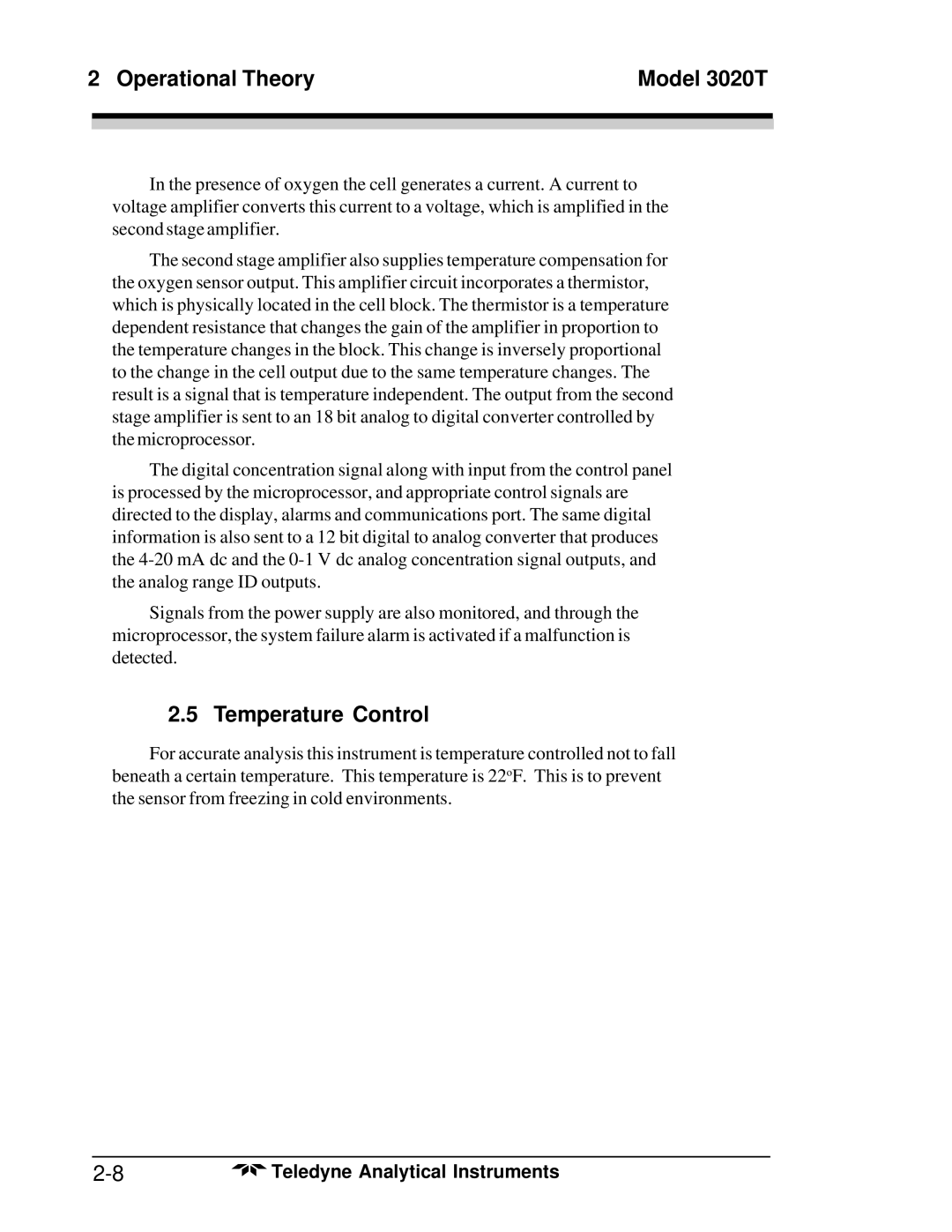2 Operational Theory | Model 3020T | |
|
|
|
|
|
|
|
|
|
In the presence of oxygen the cell generates a current. A current to voltage amplifier converts this current to a voltage, which is amplified in the second stage amplifier.
The second stage amplifier also supplies temperature compensation for the oxygen sensor output. This amplifier circuit incorporates a thermistor, which is physically located in the cell block. The thermistor is a temperature dependent resistance that changes the gain of the amplifier in proportion to the temperature changes in the block. This change is inversely proportional to the change in the cell output due to the same temperature changes. The result is a signal that is temperature independent. The output from the second stage amplifier is sent to an 18 bit analog to digital converter controlled by the microprocessor.
The digital concentration signal along with input from the control panel is processed by the microprocessor, and appropriate control signals are directed to the display, alarms and communications port. The same digital information is also sent to a 12 bit digital to analog converter that produces the
Signals from the power supply are also monitored, and through the microprocessor, the system failure alarm is activated if a malfunction is detected.
2.5 Temperature Control
For accurate analysis this instrument is temperature controlled not to fall beneath a certain temperature. This temperature is 22oF. This is to prevent the sensor from freezing in cold environments.
Teledyne Analytical Instruments |
